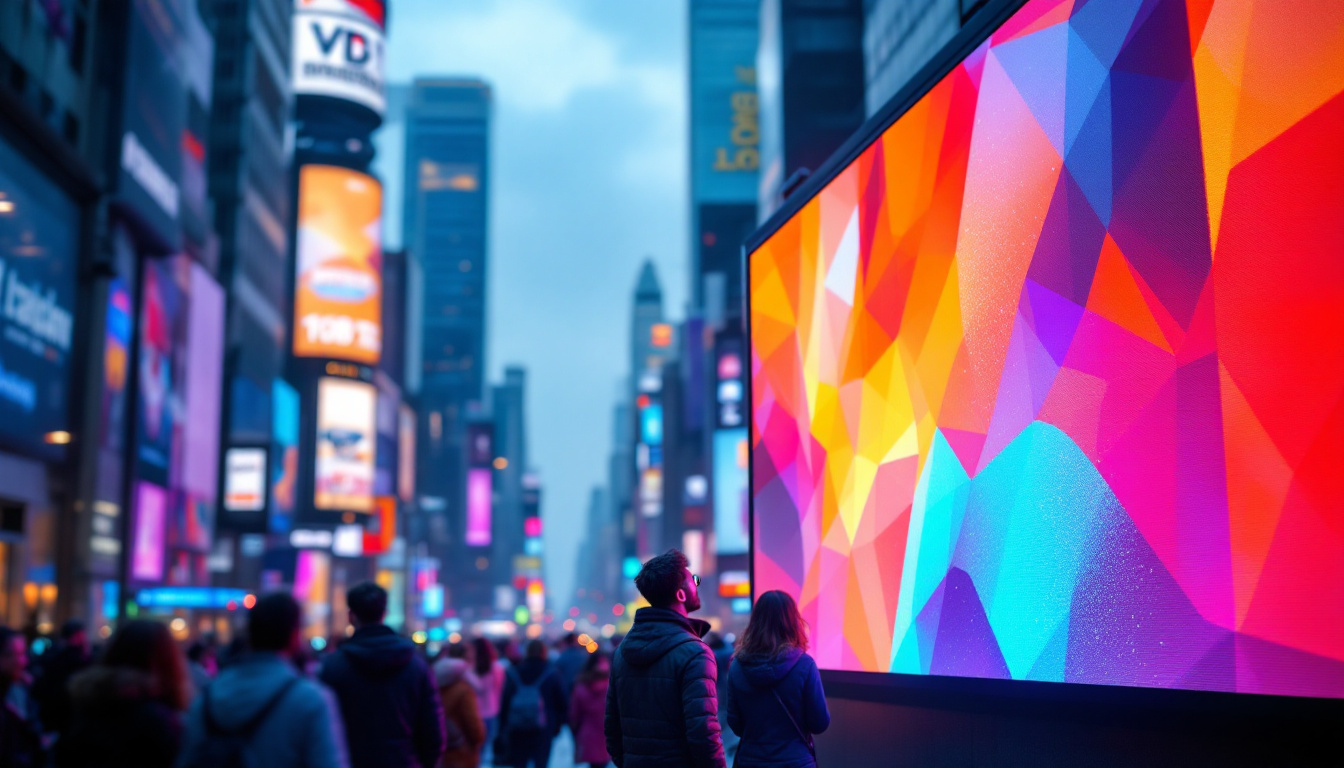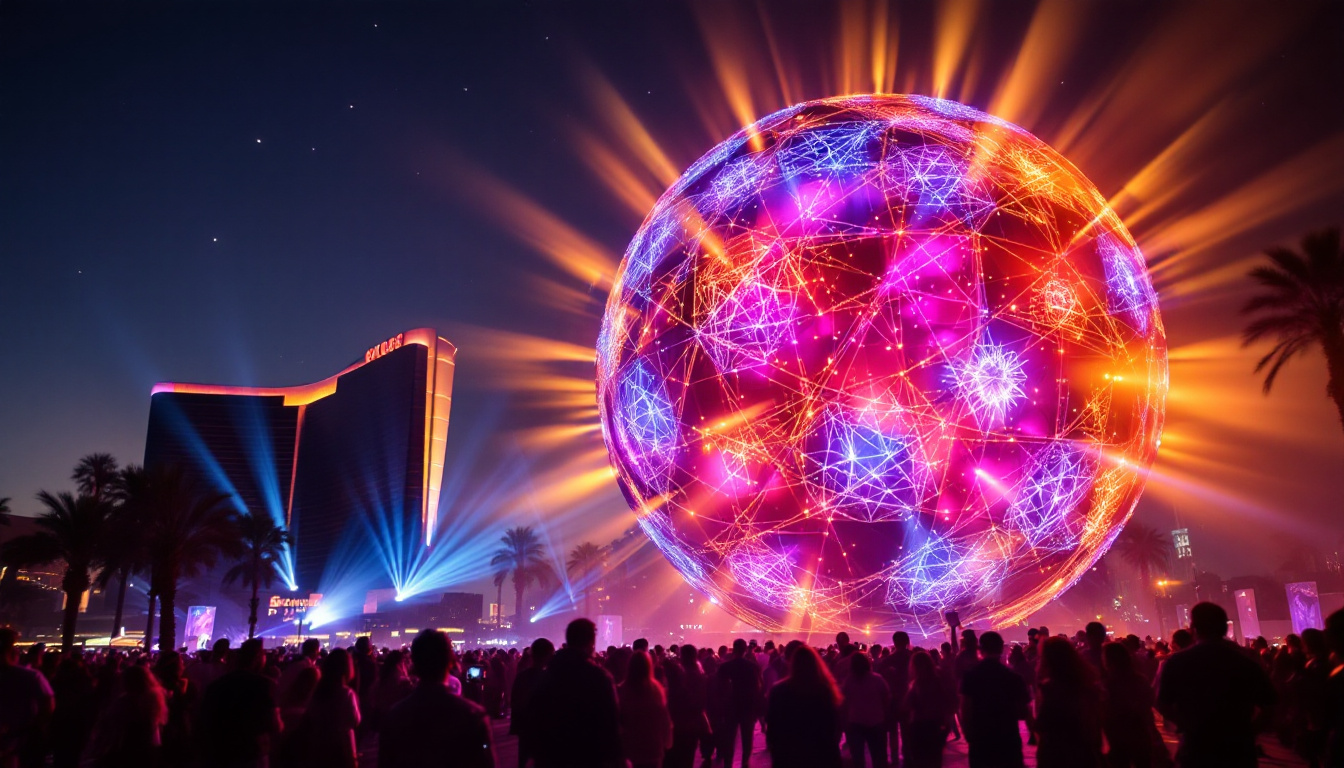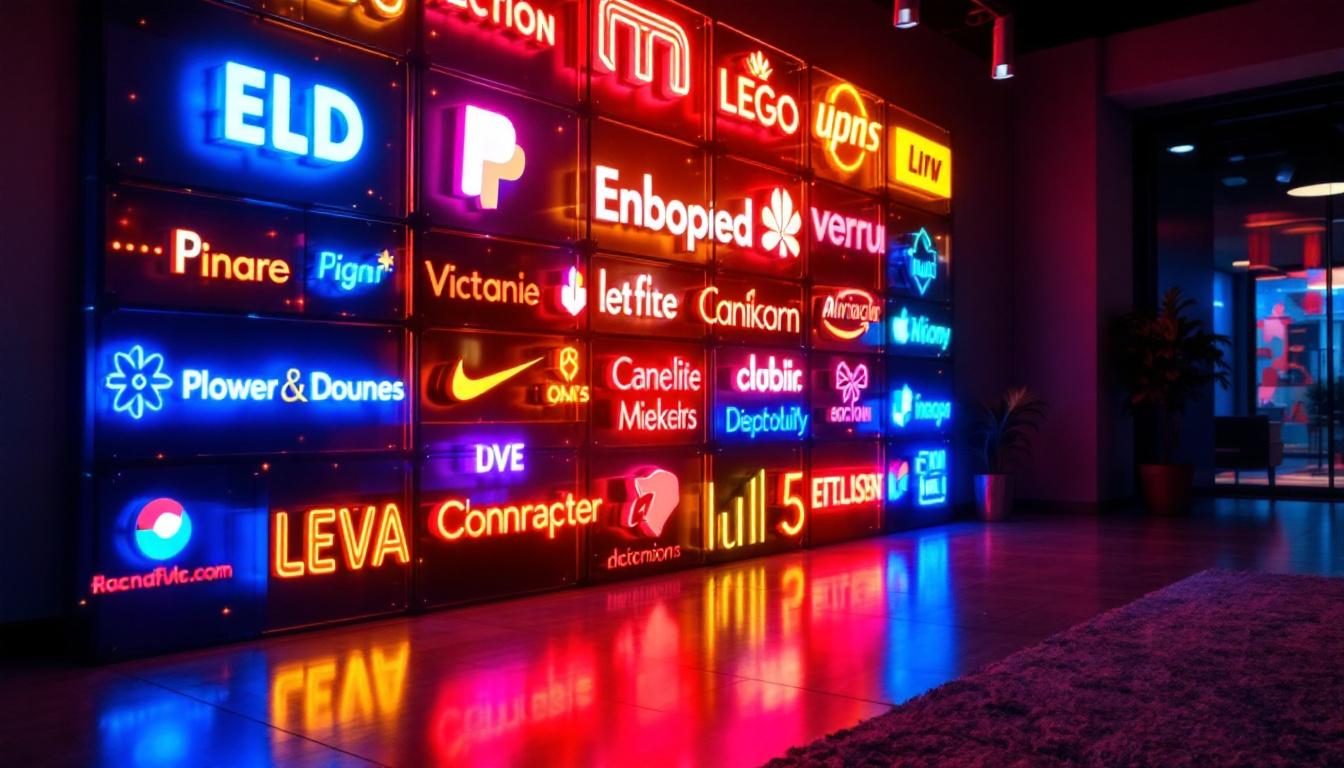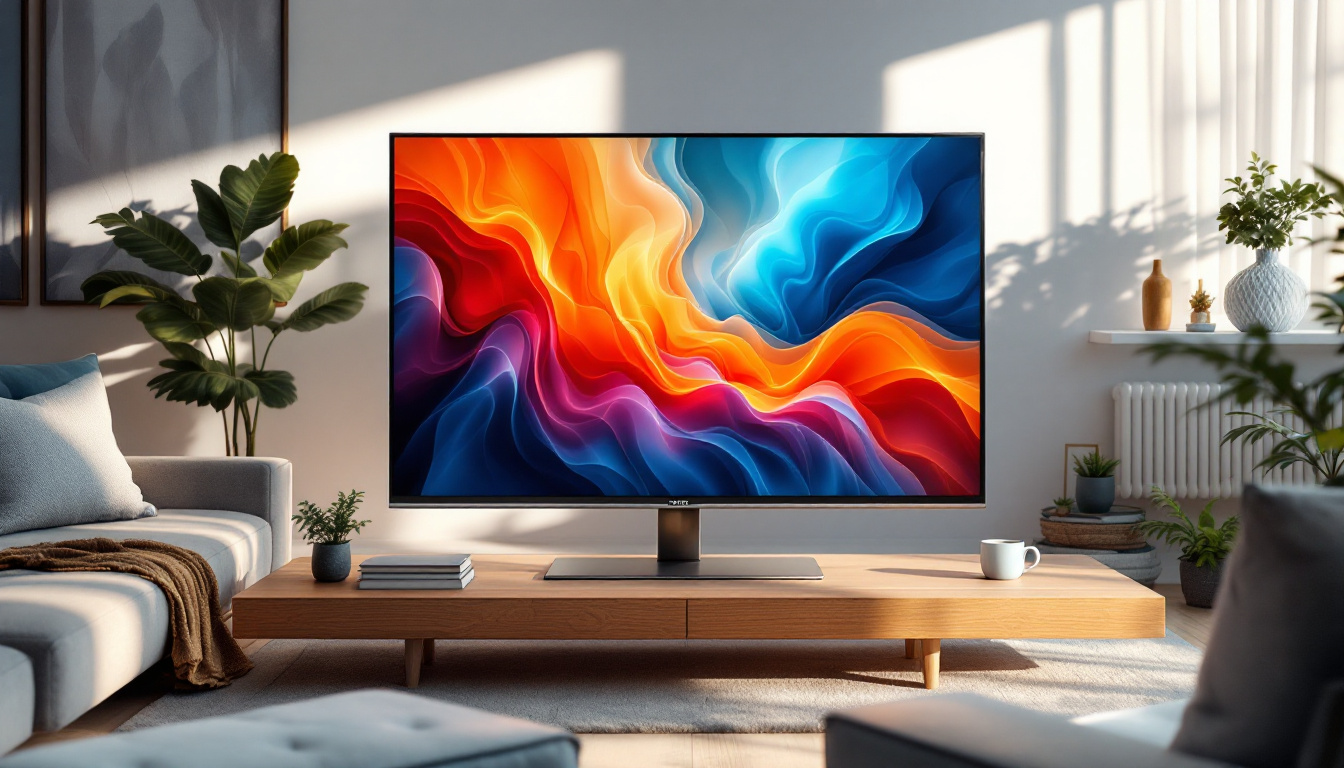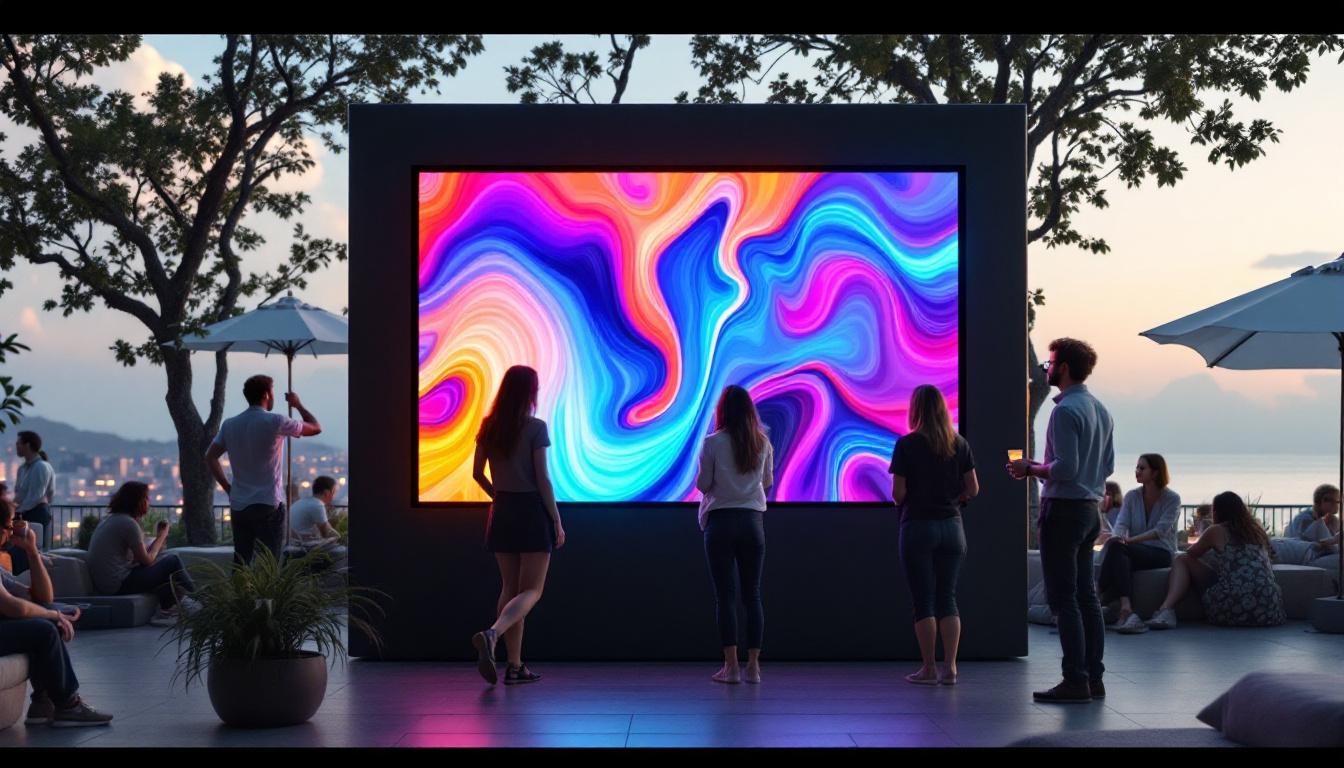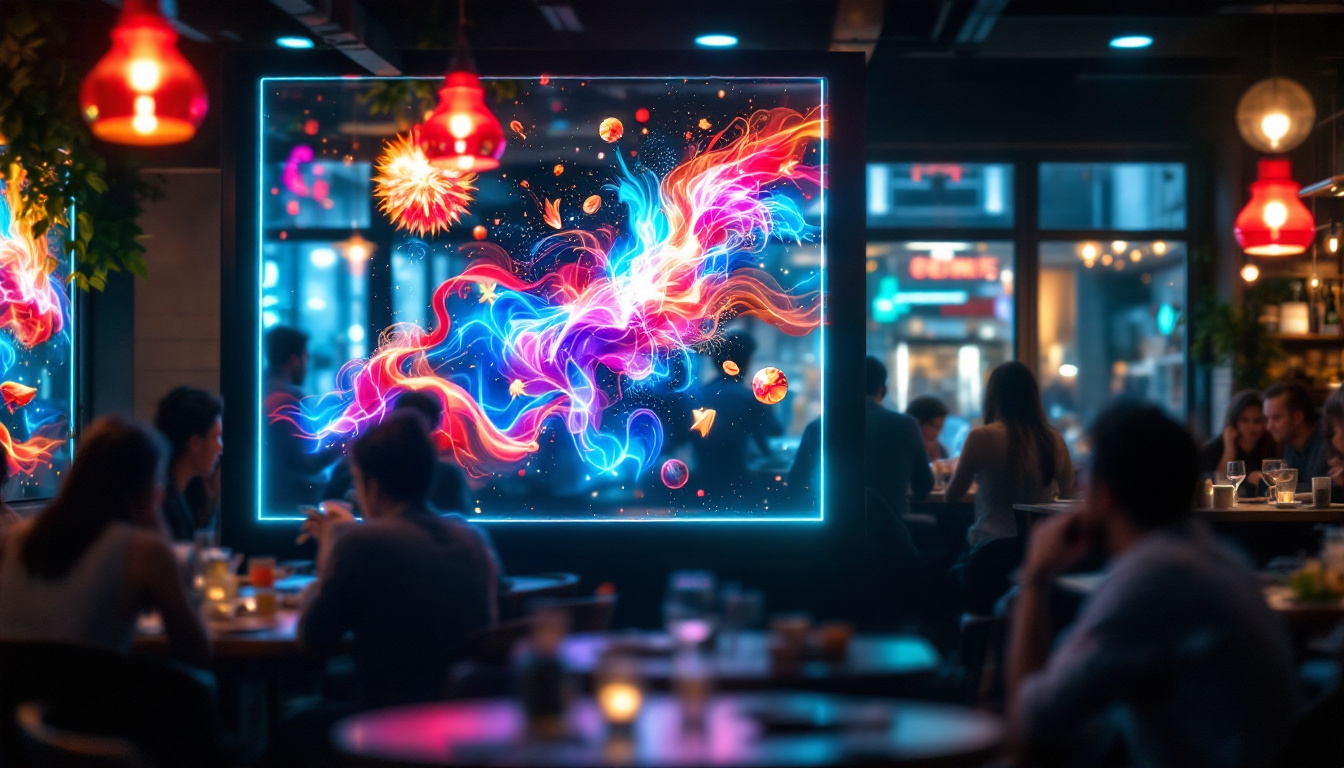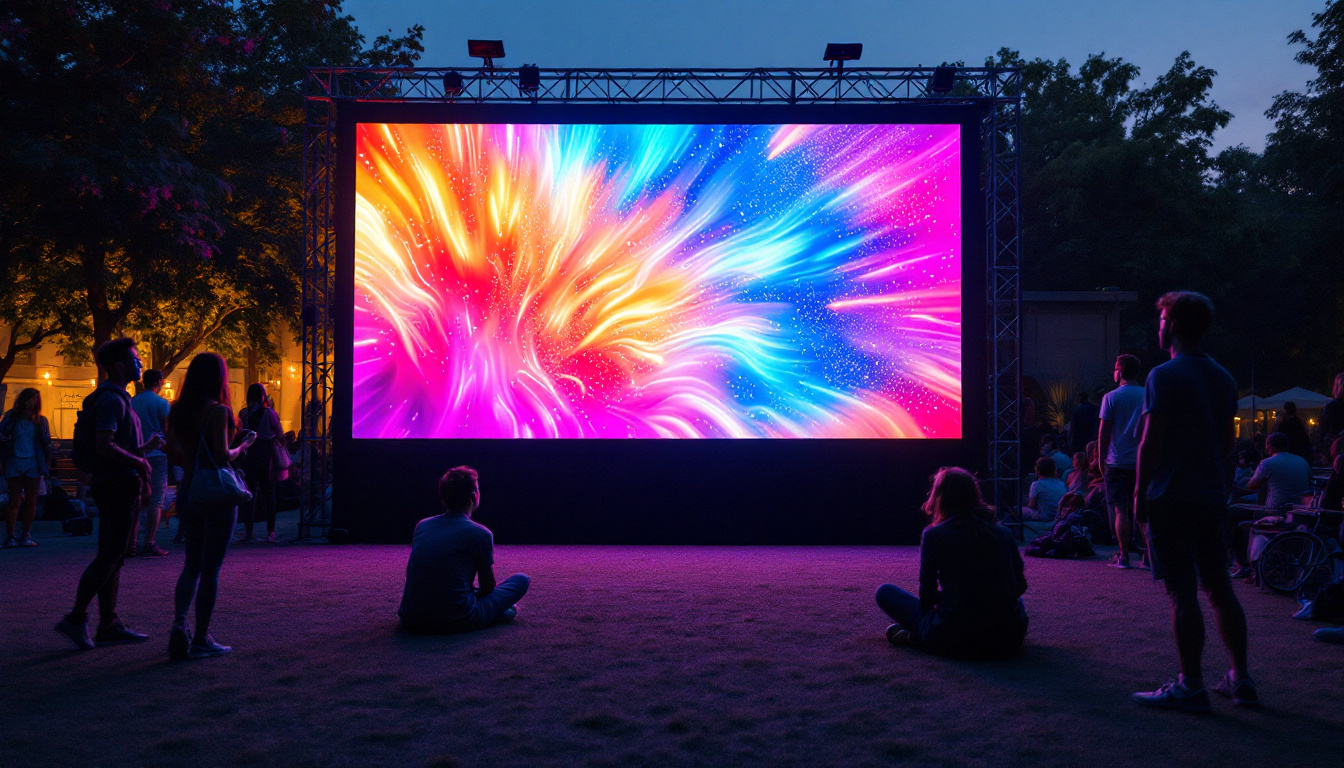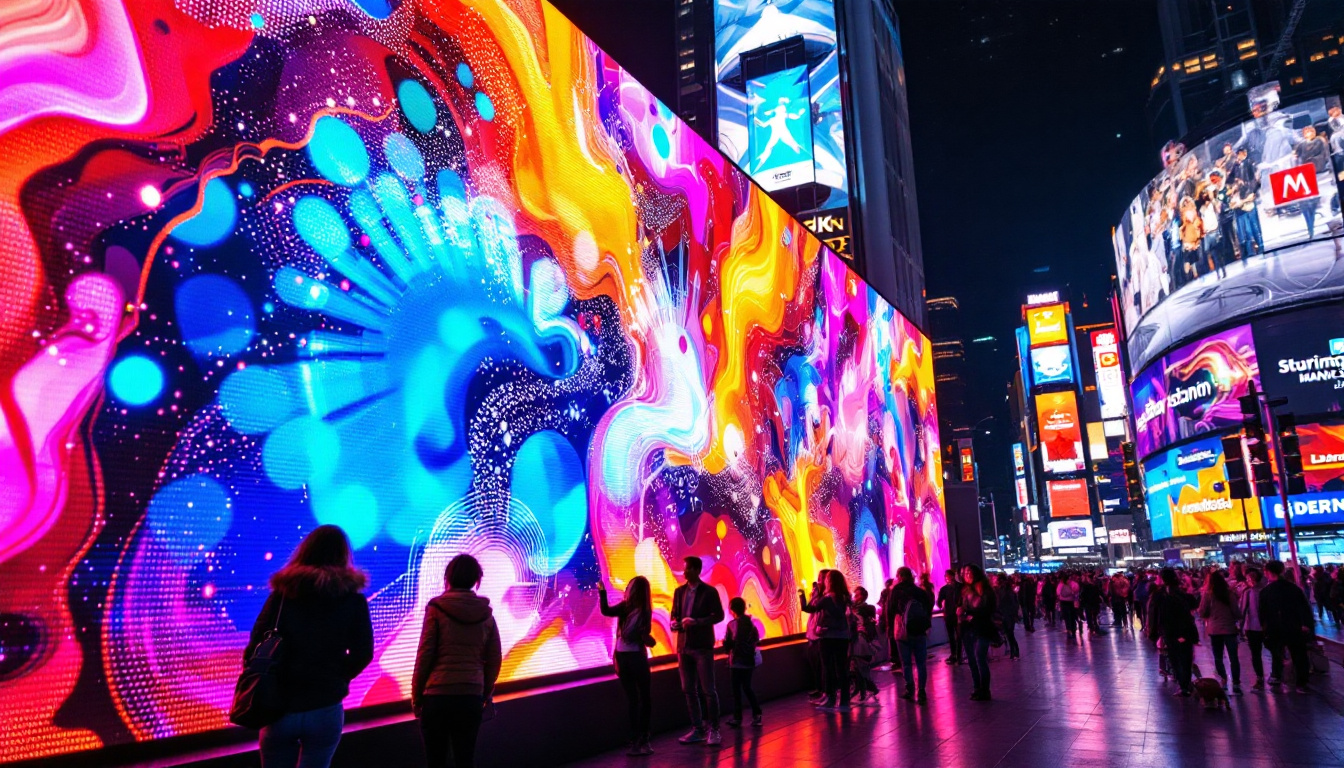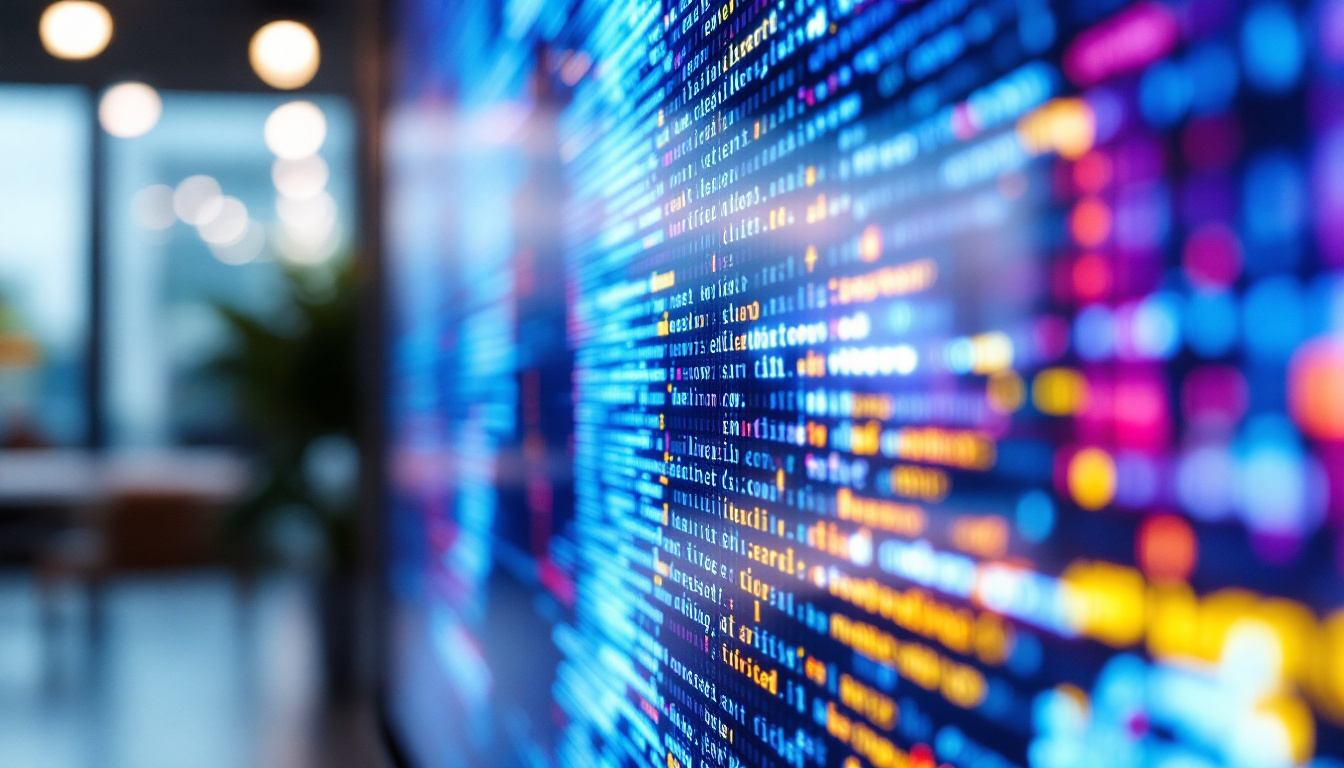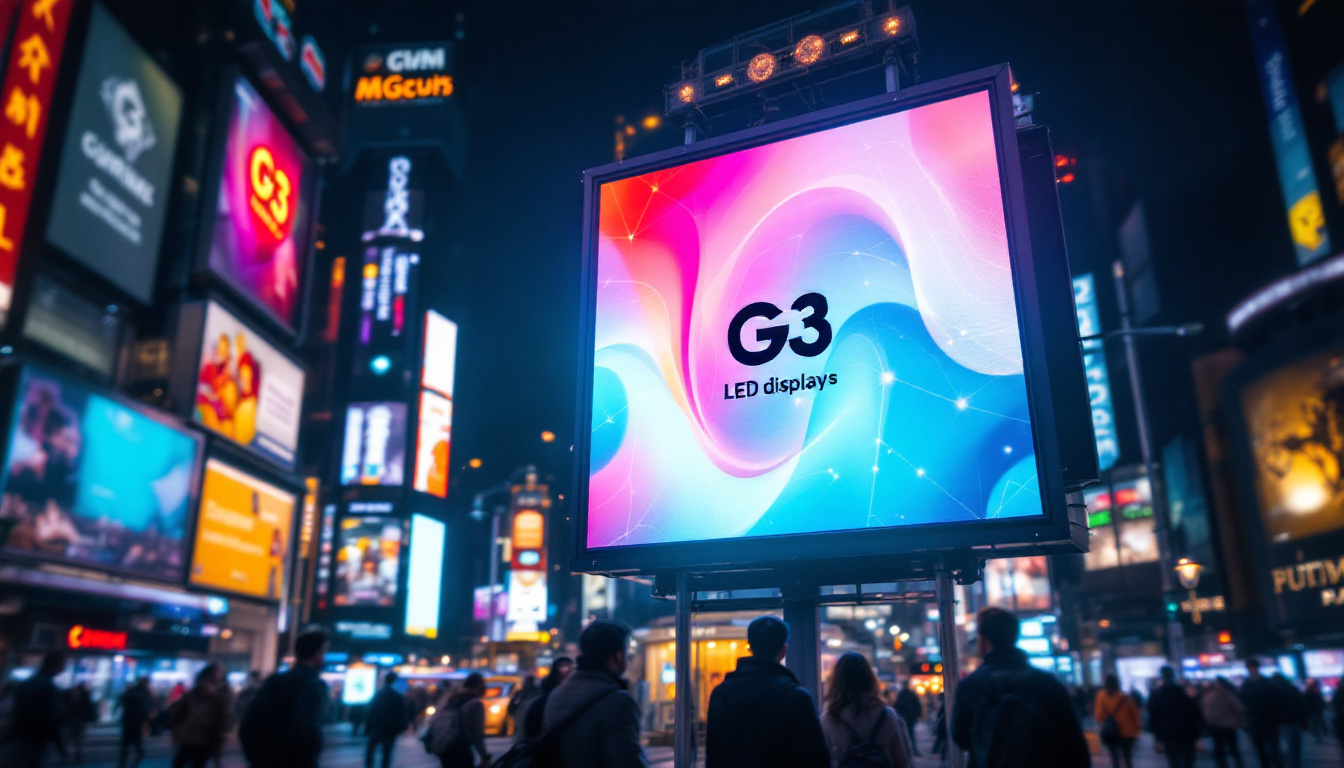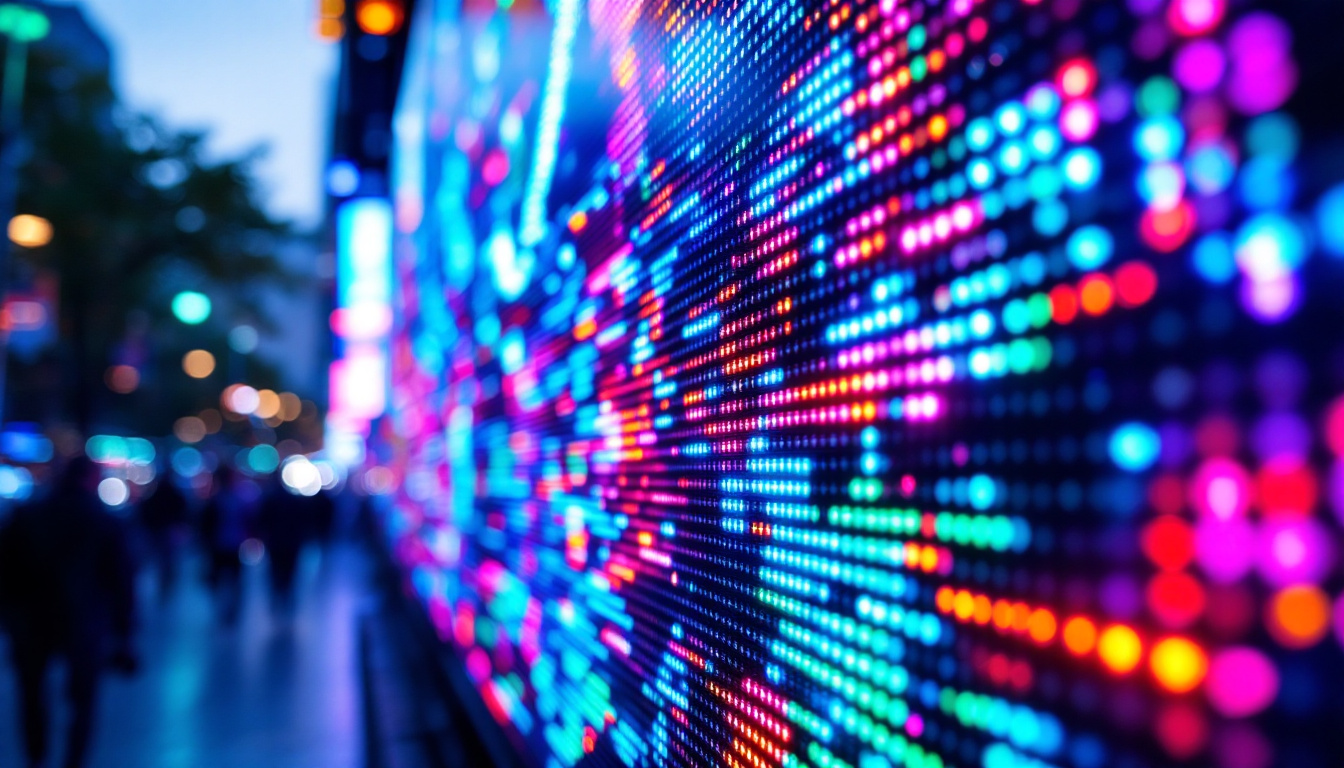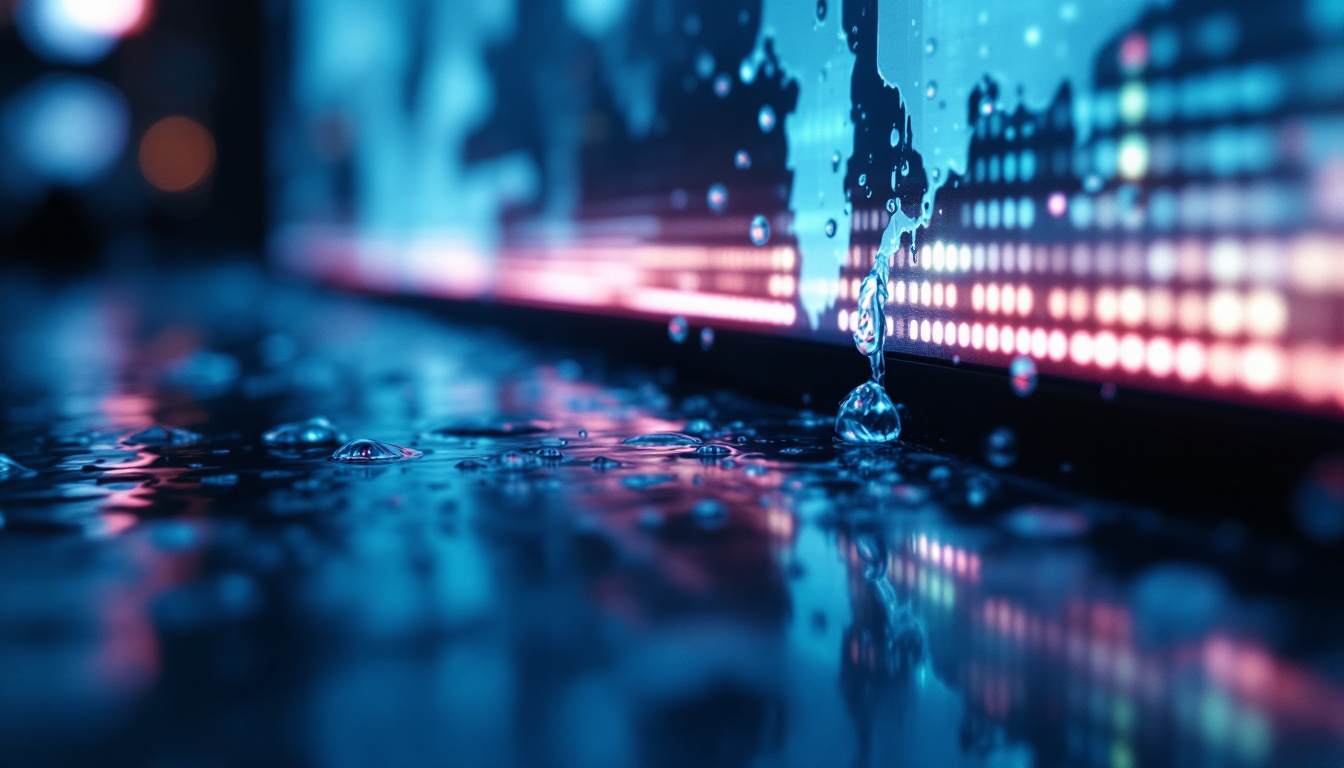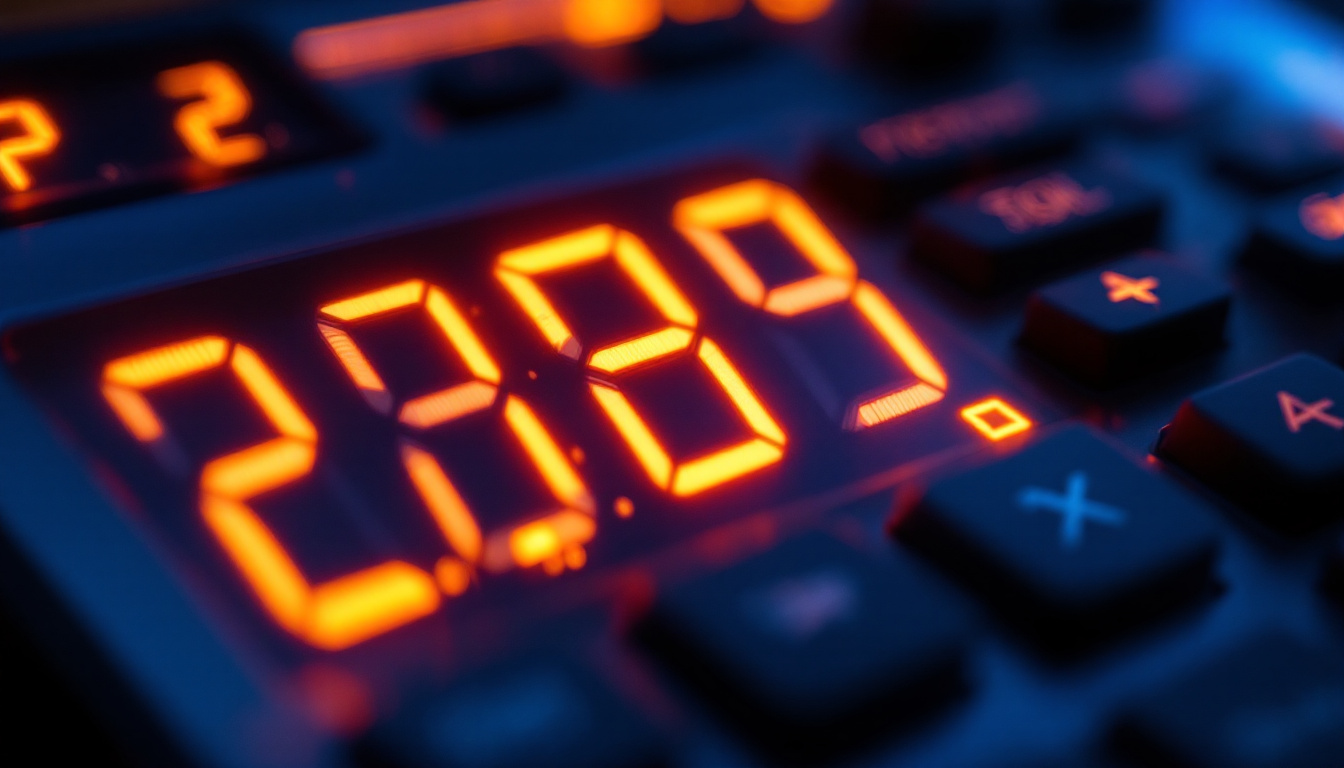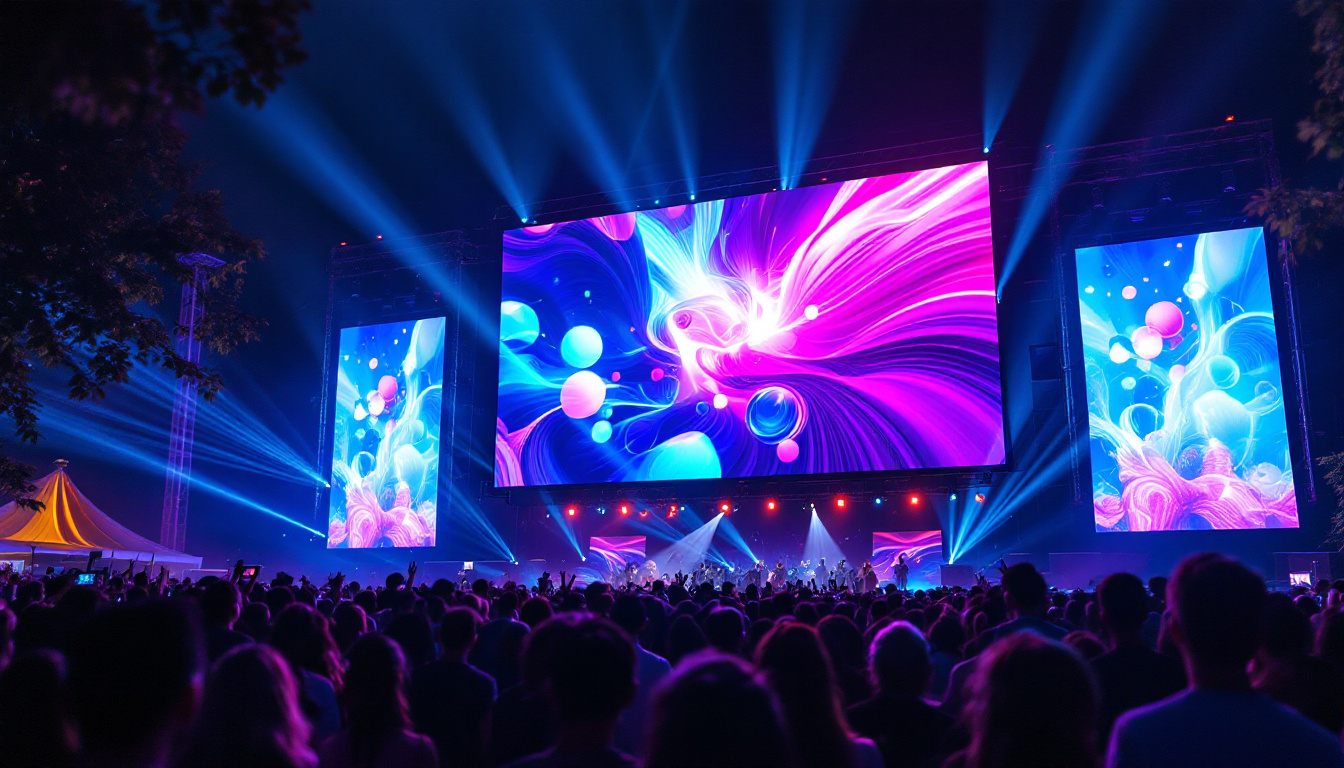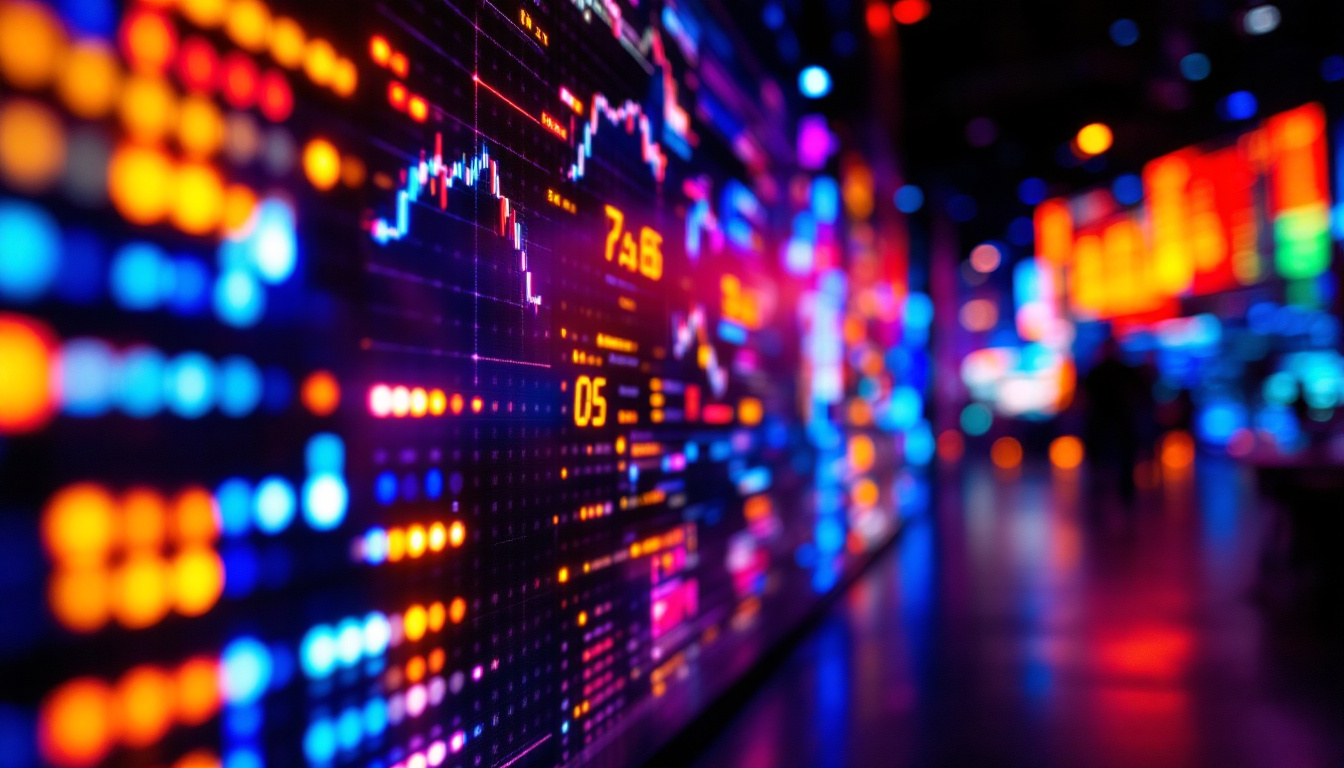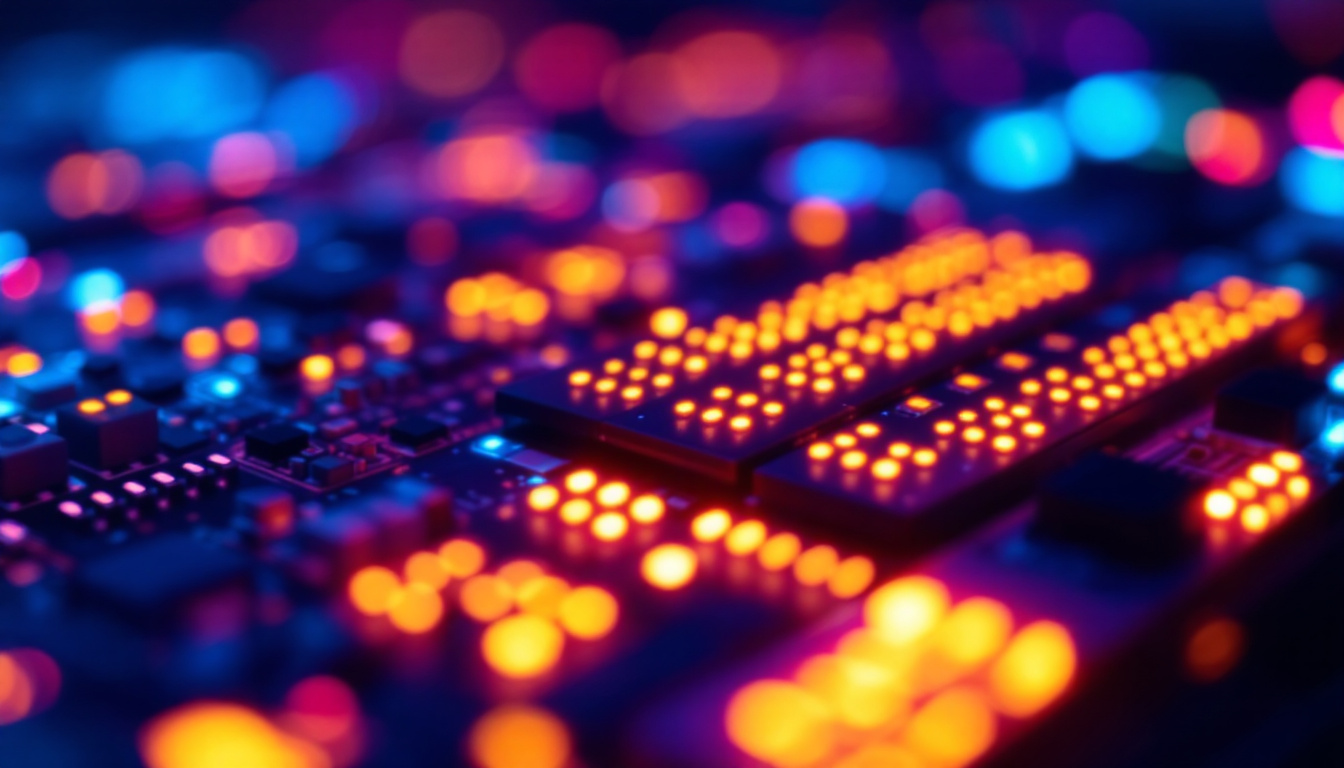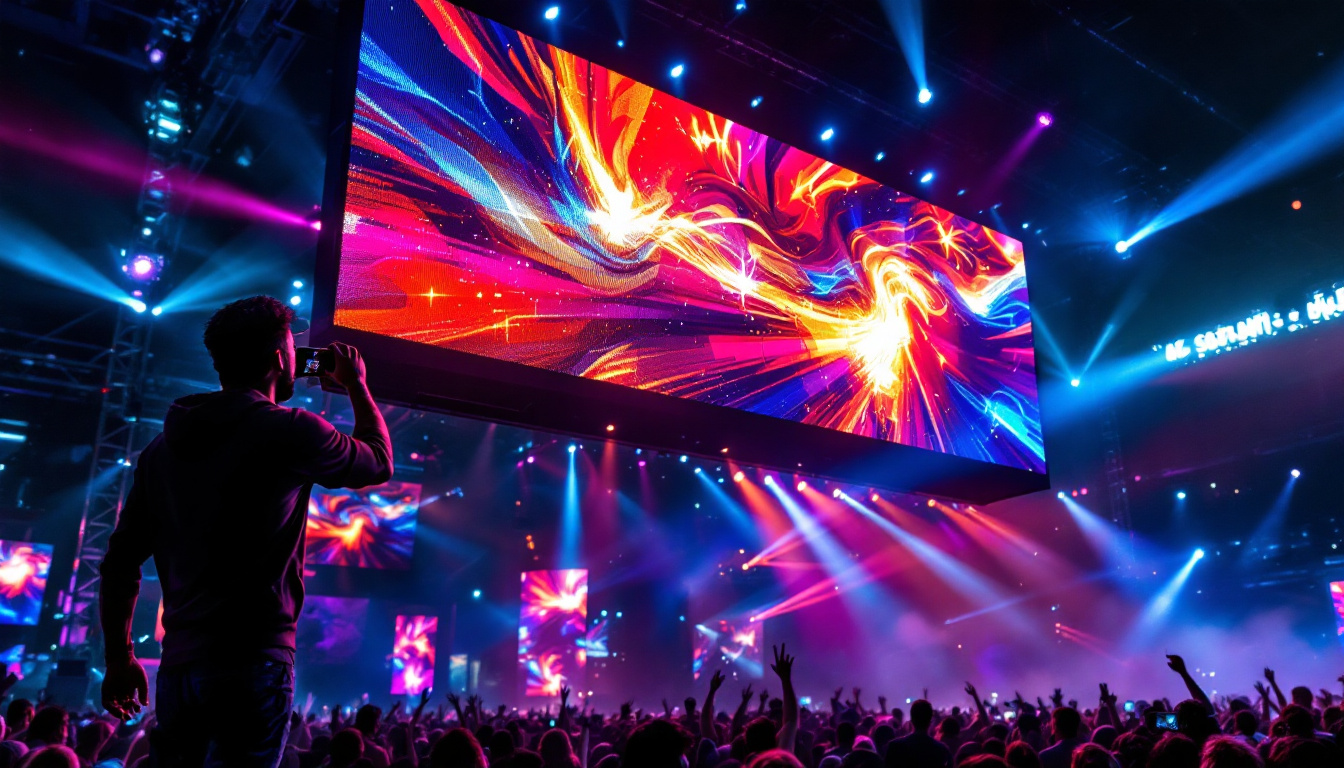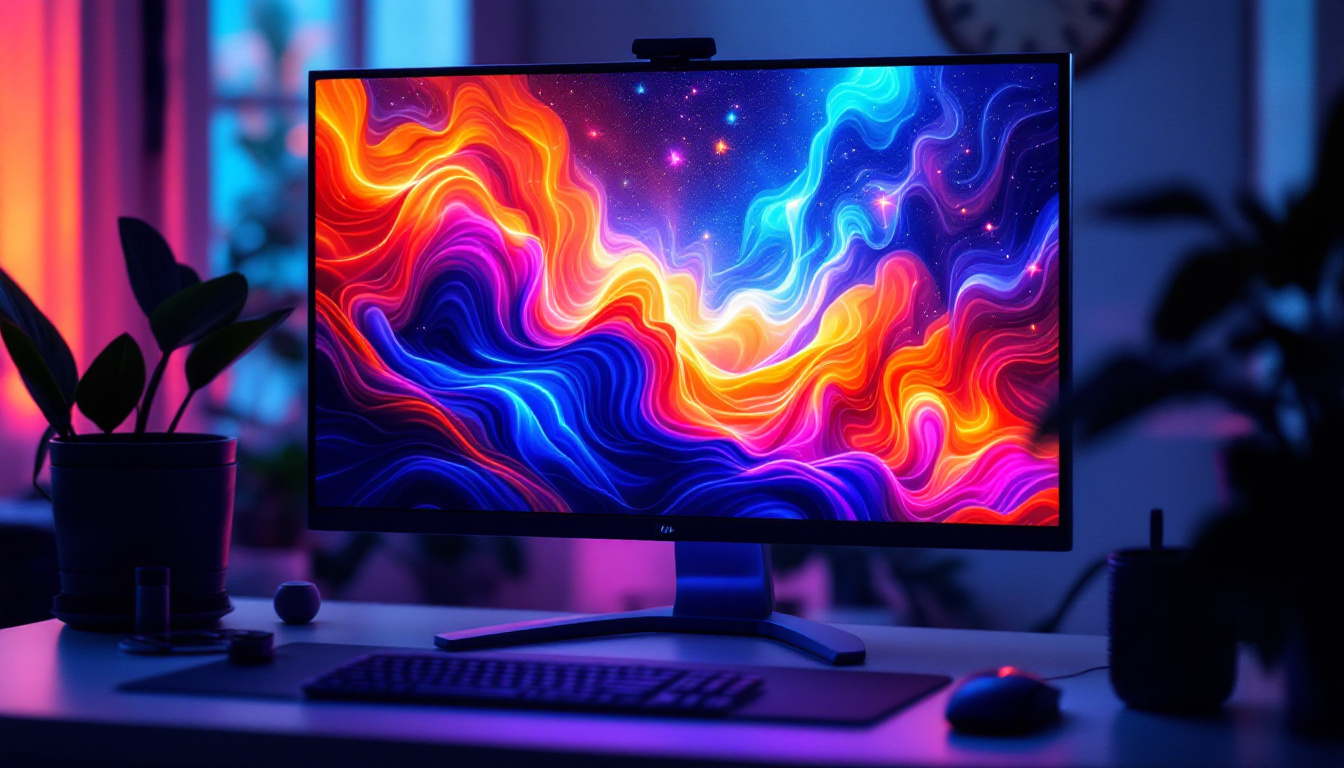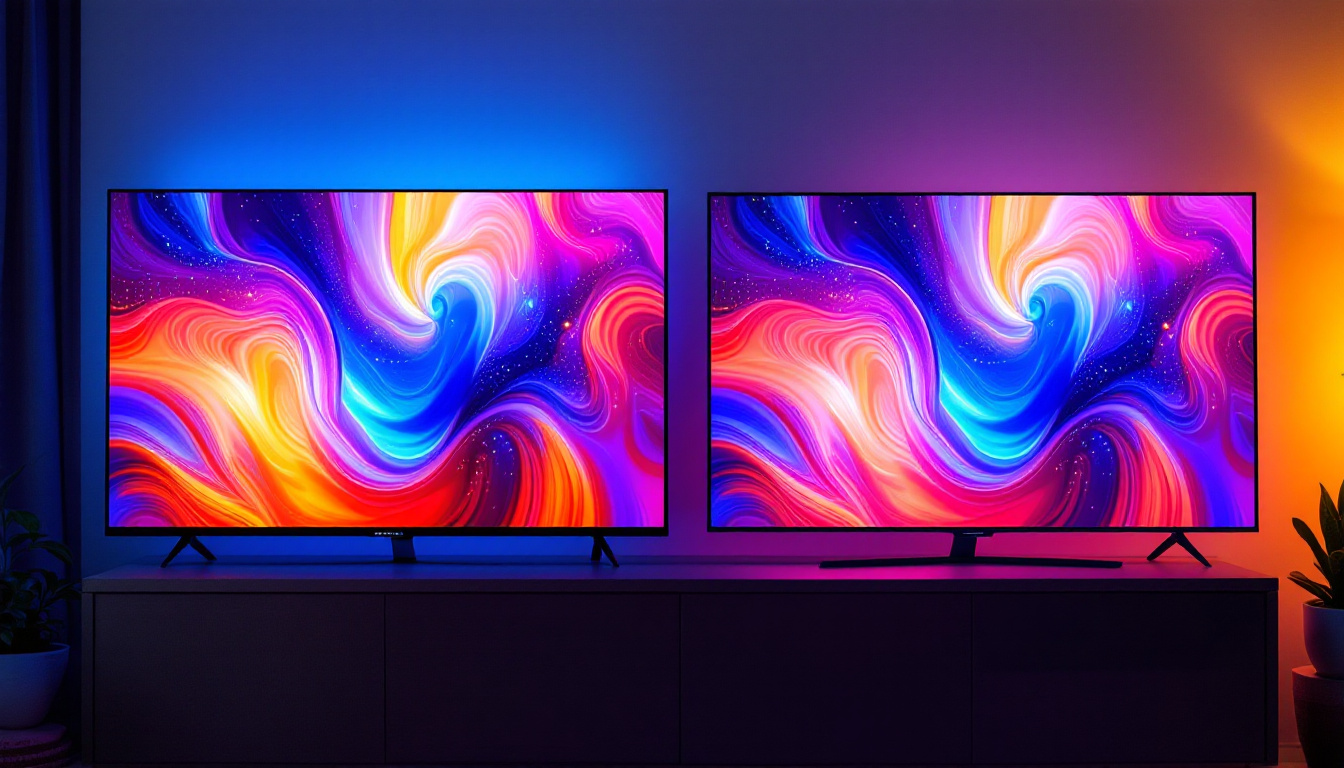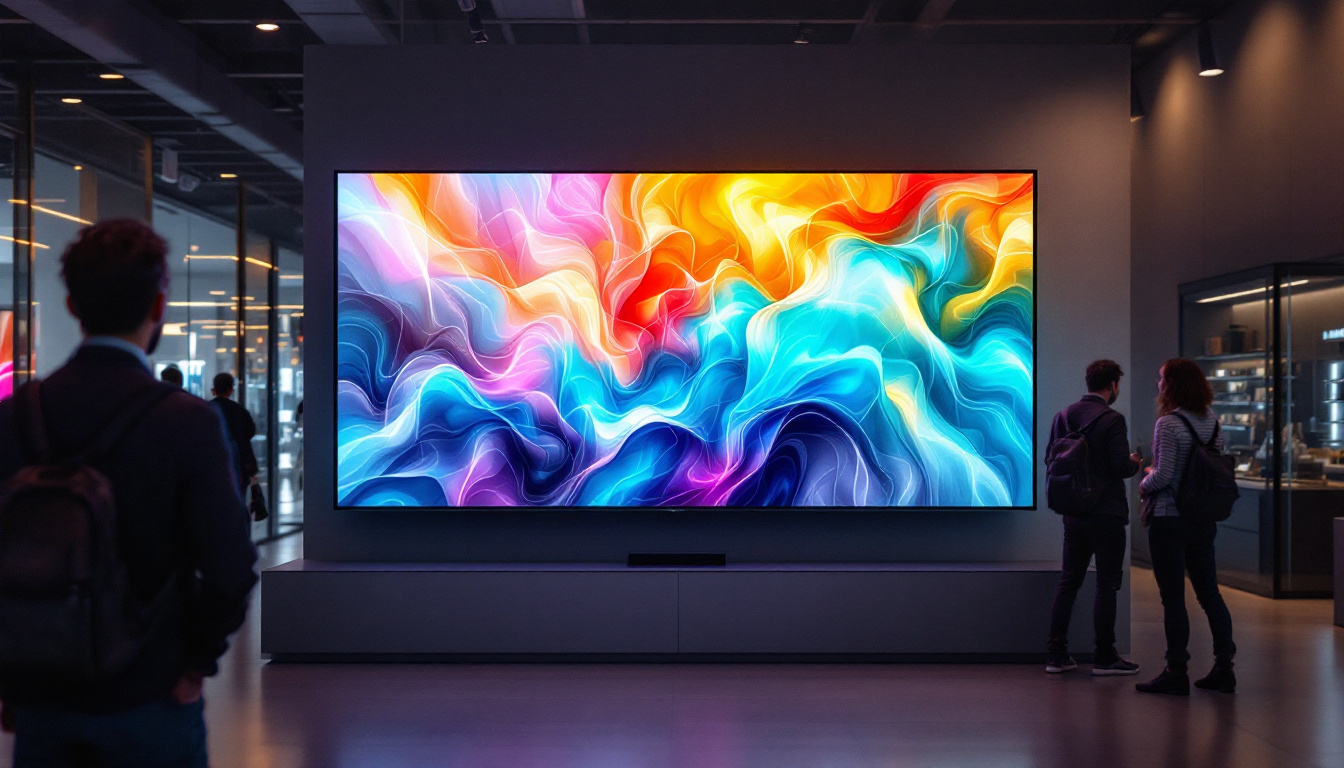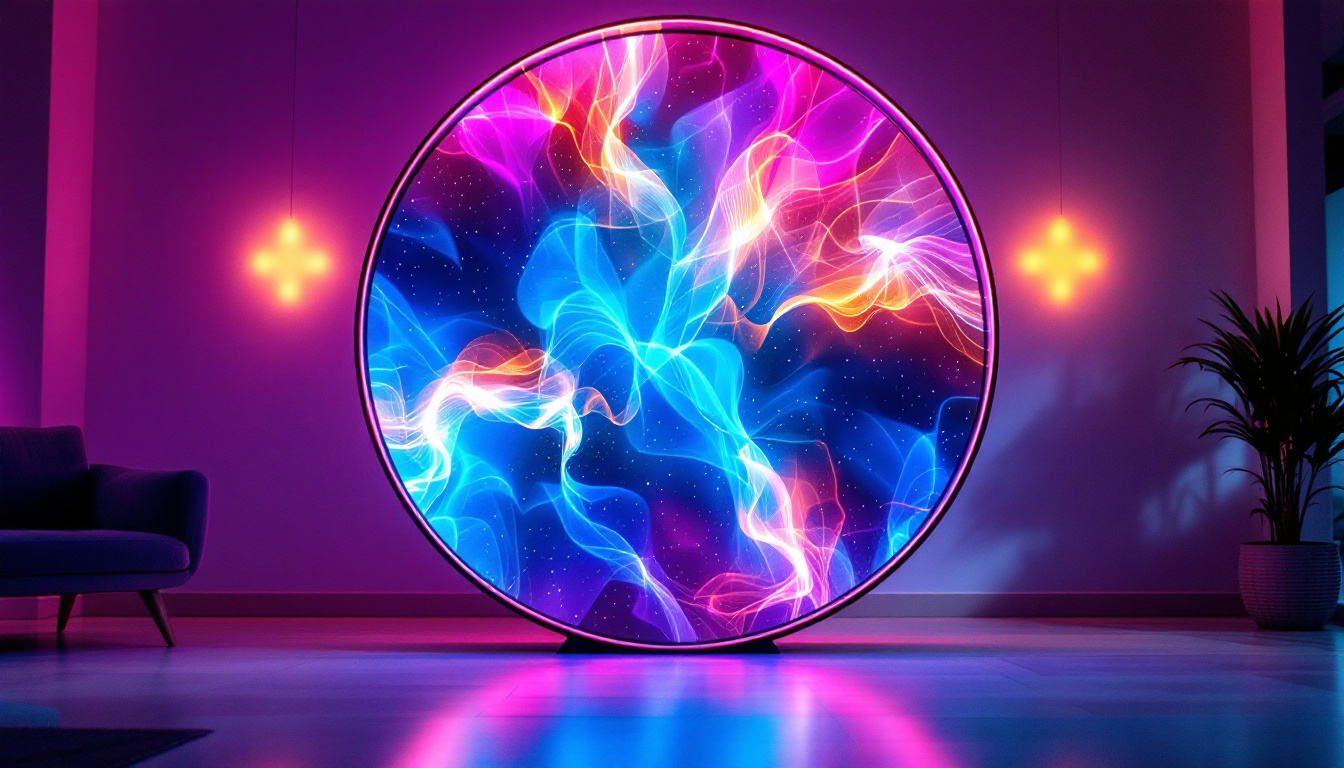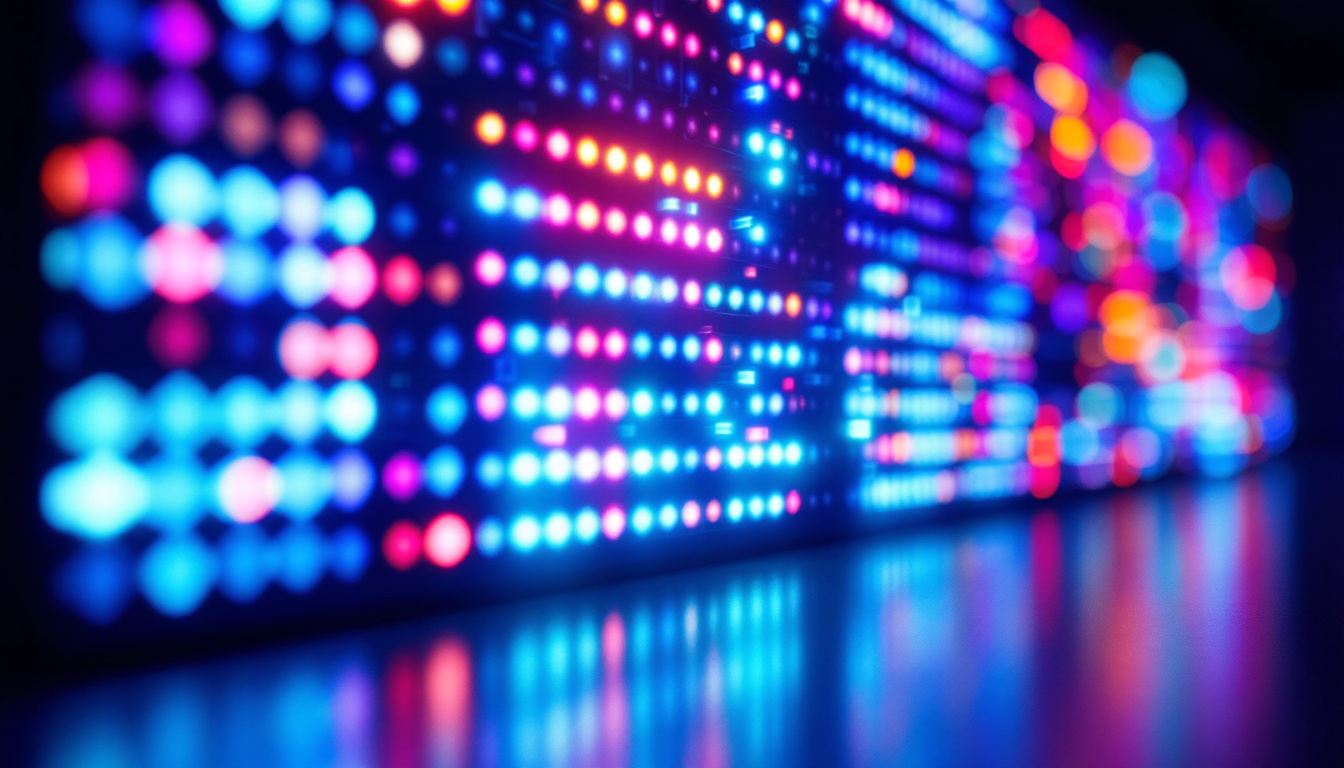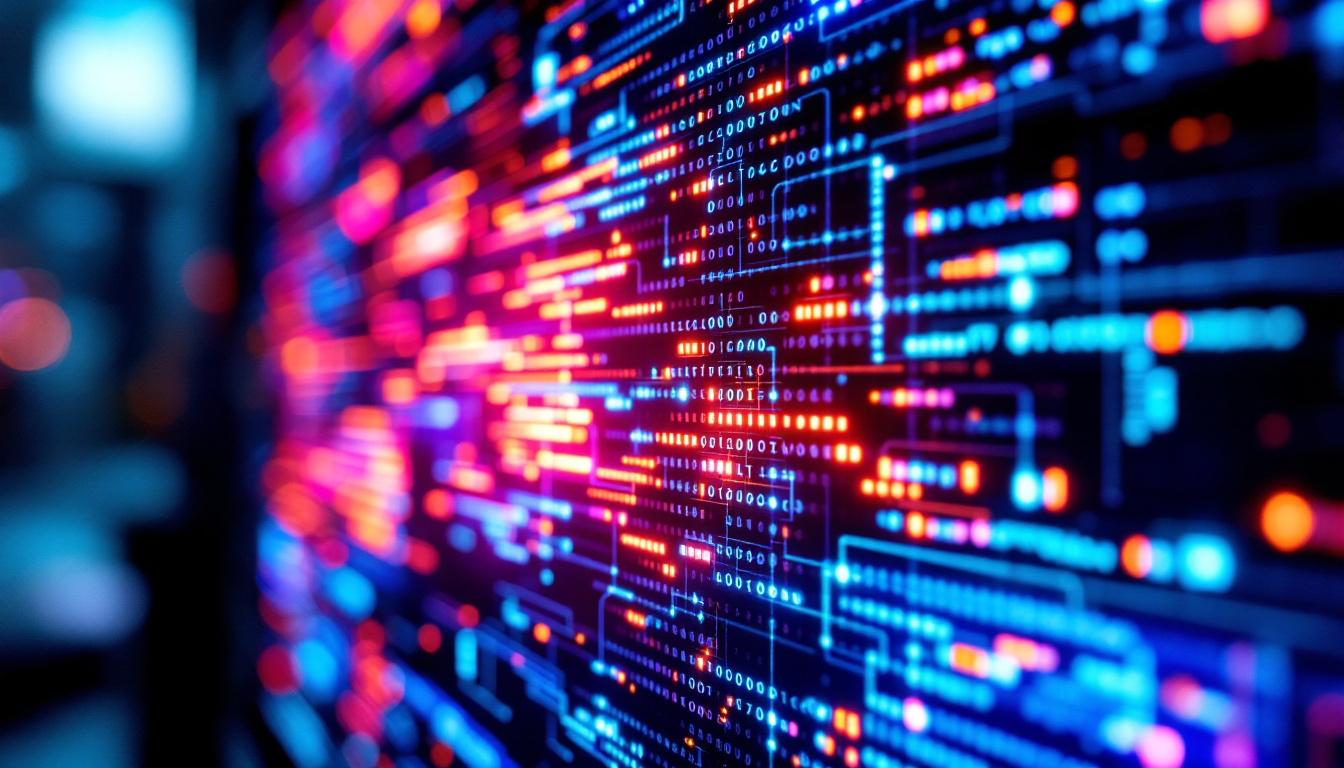In today’s fast-paced digital world, visual communication has become more vital than ever. Among the various technologies available, LED displays have emerged as a leading solution for conveying information, advertising, and entertainment. This article will delve into the intricacies of LED displays, exploring their technology, applications, benefits, and future trends.
Understanding LED Technology
LED, or Light Emitting Diode, is a semiconductor device that emits light when an electric current passes through it. Unlike traditional light sources, LEDs are more energy-efficient and have a longer lifespan. The technology behind LED displays has evolved significantly, making them a popular choice for various applications. The compact size of LEDs allows for versatile designs, enabling manufacturers to create displays that can fit into a wide range of environments, from small electronic devices to massive outdoor billboards.
How LED Displays Work
LED displays consist of an array of tiny LEDs that work together to create images and videos. Each LED can emit different colors, and by combining these colors, the display can produce a wide spectrum of hues. The basic structure includes:
- Pixel Matrix: Each pixel is made up of multiple LEDs, typically red, green, and blue (RGB). By adjusting the intensity of these colors, the display can create millions of color combinations. This ability to mix colors at the pixel level is what gives LED displays their vibrant images and sharp contrasts.
- Control System: A sophisticated control system manages the input signals and ensures that the correct colors and brightness levels are displayed at the right time. This system can also adjust to ambient light conditions, optimizing the display for visibility in various environments.
- Power Supply: LED displays require a stable power supply to ensure consistent performance and longevity. Advanced power management systems are often integrated to minimize energy consumption while maximizing brightness and color fidelity.
Types of LED Displays
There are several types of LED displays, each designed for specific applications:
- Direct View LED Displays: These are large screens made up of individual LED modules. They are commonly used for outdoor advertising and large events. Their high brightness levels make them visible even in direct sunlight, making them ideal for billboards and stadium screens.
- LED Backlit Displays: Used primarily in televisions and monitors, these displays utilize LEDs to backlight an LCD panel, enhancing brightness and color accuracy. The use of local dimming technology in these displays allows for deeper blacks and improved contrast ratios, creating a more immersive viewing experience.
- Flexible LED Displays: These innovative displays can be bent and shaped, making them suitable for unique installations and creative designs. Their adaptability has opened up new possibilities in architecture and interior design, allowing for dynamic visual presentations that can conform to various surfaces.
In addition to these types, there are also specialized LED displays, such as transparent LED screens that allow viewers to see through them while still displaying images, and high-definition LED displays that offer enhanced resolution for more detailed visuals. As technology continues to advance, the applications for LED displays are expanding, with innovations like microLED technology promising even greater efficiency and performance. This evolution is not only transforming the way we experience visual media but also paving the way for new forms of artistic expression and interactive installations.
Applications of LED Displays
LED displays have found their way into numerous sectors, revolutionizing how information is presented. Their versatility and adaptability make them suitable for a wide range of applications.
Advertising and Marketing
One of the most prominent uses of LED displays is in advertising. Billboards, storefronts, and event venues utilize vibrant LED screens to capture attention and convey messages effectively. The dynamic nature of LED displays allows for changing advertisements, which can be tailored to specific audiences and times of day. Moreover, the ability to integrate interactive elements into these displays enhances consumer engagement, allowing potential customers to interact with the content through touch or mobile devices. This interactivity not only fosters a deeper connection with the brand but also provides valuable data on consumer preferences and behaviors.
Entertainment and Events
In the entertainment industry, LED displays are ubiquitous. Concerts, festivals, and sporting events often feature large LED screens to enhance the audience’s experience. These displays can showcase live feeds, graphics, and animations, creating an immersive environment that engages viewers. Furthermore, the use of LED technology in stage design has transformed performances, allowing for stunning visual effects that complement the music and storytelling. From dazzling light shows to synchronized visuals that respond to the beat, LED displays have become an essential tool for artists and event organizers looking to create unforgettable experiences.
Information and Wayfinding
LED displays are also used in public spaces for information dissemination. Airports, train stations, and shopping malls utilize LED screens to provide real-time updates, directions, and advertisements. Their clarity and visibility ensure that essential information reaches the audience promptly. Additionally, the integration of LED displays with smart technology enables dynamic content management, allowing operators to update information instantly based on changing conditions, such as flight delays or emergency alerts. This adaptability not only improves the efficiency of communication but also enhances the overall experience for travelers and shoppers, making navigation through busy environments more intuitive and stress-free.
Benefits of LED Displays
The advantages of LED displays extend beyond just visual appeal. Their unique features contribute to their growing popularity across various industries.
Energy Efficiency
LED technology is renowned for its energy efficiency. Compared to traditional lighting solutions, LED displays consume significantly less power, making them an environmentally friendly choice. This efficiency not only reduces operational costs but also minimizes the carbon footprint of businesses. Furthermore, many LED displays are designed with smart technology that allows for automatic dimming based on ambient light conditions, further enhancing energy savings. This adaptability ensures that businesses can maintain a vibrant display while being conscious of their energy consumption.
Longevity and Durability
LED displays have a long lifespan, often exceeding 100,000 hours of operation. This durability makes them a cost-effective investment, as they require less frequent replacement and maintenance. Additionally, they are resistant to shock and vibration, making them suitable for various environments. Their robust construction allows them to withstand harsh weather conditions, making them a preferred choice for outdoor advertising and signage. This resilience not only enhances their functionality but also ensures that businesses can rely on them for consistent performance over time, reducing the need for costly repairs or replacements.
High Brightness and Visibility
One of the standout features of LED displays is their brightness. They can produce vivid colors and maintain visibility even in direct sunlight, making them ideal for outdoor applications. This high brightness ensures that content remains clear and engaging, regardless of the surrounding conditions. Moreover, LED displays offer superior contrast ratios, which enhance the clarity of images and text, making them more appealing to viewers. The ability to display dynamic content, such as videos and animations, further captivates audiences, driving higher engagement rates. This versatility allows businesses to utilize LED displays for a wide range of purposes, from advertising to information dissemination, ensuring that their messages reach the intended audience effectively.
Challenges and Considerations
While LED displays offer numerous benefits, there are challenges and considerations that potential users should be aware of before investing in this technology.
Initial Cost
The upfront cost of LED displays can be higher than traditional display technologies. However, it is essential to consider the long-term savings in energy consumption and maintenance. Businesses should conduct a cost-benefit analysis to determine the best option for their needs.
Content Management
Effective content management is crucial for maximizing the impact of LED displays. Businesses need to invest in software and training to create engaging content that resonates with their audience. Regular updates and maintenance of content are essential to keep the display fresh and relevant.
Environmental Impact
While LED technology is more energy-efficient, the manufacturing and disposal of LED displays can have environmental implications. It is important for businesses to consider sustainable practices, such as recycling old displays and using eco-friendly materials in their installations.
Future Trends in LED Display Technology
The LED display market is continually evolving, with new innovations and trends emerging. Understanding these trends can help businesses stay ahead of the curve and make informed decisions regarding their visual communication strategies.
Advancements in Resolution
As technology progresses, the demand for higher resolution displays is on the rise. Ultra-high-definition (UHD) and 4K LED displays are becoming more common, providing sharper and more detailed images. This trend is particularly significant in sectors such as entertainment, where visual quality is paramount.
Integration with Smart Technology
The integration of LED displays with smart technology is another exciting trend. With the rise of the Internet of Things (IoT), LED displays can now be connected to various devices and networks. This connectivity allows for real-time data updates, interactive content, and enhanced user experiences.
Increased Customization
Customization options for LED displays are expanding. Businesses can now choose from a variety of shapes, sizes, and resolutions to create unique visual experiences. This trend allows for greater creativity in design and enables brands to stand out in a competitive market.
Conclusion
LED displays have transformed the landscape of visual communication, offering a dynamic and versatile solution for various applications. Their energy efficiency, longevity, and high visibility make them an attractive choice for businesses looking to enhance their advertising, entertainment, and information dissemination efforts.
As technology continues to evolve, the future of LED displays looks promising. With advancements in resolution, integration with smart technology, and increased customization options, LED displays are set to play an even more significant role in shaping how information is presented and consumed.
Investing in LED display technology not only enhances visual communication but also positions businesses to thrive in an increasingly digital world. By understanding the intricacies of LED displays and staying informed about emerging trends, organizations can leverage this powerful tool to engage audiences effectively and drive success.
Discover LumenMatrix’s Innovative LED Solutions
Ready to elevate your visual communication strategy with cutting-edge LED technology? Explore LumenMatrix’s comprehensive range of LED display solutions, designed to captivate your audience and amplify your message. From Indoor and Outdoor LED Wall Displays to specialized options like Vehicle LED Displays and LED Sports Displays, LumenMatrix offers tailored solutions to fit your unique needs. Embrace the future of digital signage with our Custom LED Displays, All-in-One LED Displays, and revolutionary LED Transparent Displays. Check out LumenMatrix LED Display Solutions today and transform your brand’s visual impact.

